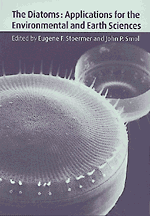Book contents
- Frontmatter
- Contents
- Contributors
- Preface
- Part I Introduction
- Part II Diatoms as indicators of environmental change in flowing waters and lakes
- 2 Assessing environmental conditions in rivers and streams with diatoms
- 3 Diatoms as indicators of hydrologic and climatic change in saline lakes
- 4 Diatoms as mediators of biogeochemical silica depletion in the Laurentian Great Lakes
- 5 Diatoms as indicators of surface water acidity
- 6 Diatoms as indicators of lake eutrophication
- 7 Continental diatoms as indicators of long-term environmental change
- 8 Diatoms as indicators of water level change in freshwater lakes
- Part III Diatoms as indicators in extreme environments
- Part IV Diatoms as indicators in marine and estuarine environments
- Part V Other applications
- Part VI Conclusions
- Glossary, and acronyms
- Index
2 - Assessing environmental conditions in rivers and streams with diatoms
Published online by Cambridge University Press: 16 January 2010
- Frontmatter
- Contents
- Contributors
- Preface
- Part I Introduction
- Part II Diatoms as indicators of environmental change in flowing waters and lakes
- 2 Assessing environmental conditions in rivers and streams with diatoms
- 3 Diatoms as indicators of hydrologic and climatic change in saline lakes
- 4 Diatoms as mediators of biogeochemical silica depletion in the Laurentian Great Lakes
- 5 Diatoms as indicators of surface water acidity
- 6 Diatoms as indicators of lake eutrophication
- 7 Continental diatoms as indicators of long-term environmental change
- 8 Diatoms as indicators of water level change in freshwater lakes
- Part III Diatoms as indicators in extreme environments
- Part IV Diatoms as indicators in marine and estuarine environments
- Part V Other applications
- Part VI Conclusions
- Glossary, and acronyms
- Index
Summary
Introduction
Assessments of environmental conditions in rivers and streams with diatoms have a long history, which has resulted in the development of the two basic conceptual and analytical approaches used today. First, based on the work of Kolkwitz and Marsson (1908), autecological indices were developed to infer levels of pollution based on the species composition of assemblages and the ecological preferences and tolerances of taxa (e.g., Butcher, 1947; Fjerdingstad, 1950; Zelinka & Marvan, 1961; Lowe, 1974; Lange-Bertalot, 1979). Second, Patrick's early monitoring studies (Patrick, 1949; Patrick et al., 1954; Patrick & Strawbridge, 1963) relied primarily on diatom diversity as a general indicator of river health (i.e., ecological integrity), because species composition of assemblages varied seasonally and species richness varied less. Thus, the concepts and tools for assessing ecosystem health and diagnosing causes of impairment in aquatic habitats, particularly rivers and streams, were established and developed between 50 and 100 years ago.
The many advances in the use of diatoms and other algae for monitoring stream and river quality have been reviewed by Patrick (1973) and, more recently, by Stevenson and Lowe (1986), Round (1991), Whitton et al. (1991), Coste et al. (1991), Whitton and Kelly (1995), Rosen (1995), and Lowe and Pan (1996). There are three major objectives for this chapter. First, we emphasize the importance of designing environmental assessments so that many approaches are used and results are based on rigorous statistical testing of hypotheses. Second, we review the many characteristics of diatom assemblages that could be used in assessments and the methods and indices of assessment.
- Type
- Chapter
- Information
- The DiatomsApplications for the Environmental and Earth Sciences, pp. 11 - 40Publisher: Cambridge University PressPrint publication year: 1999
- 118
- Cited by



